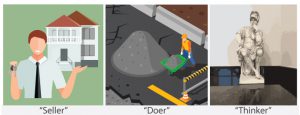By Muthiah Kasi, PE, SE, CVS-Life, FSAVE – Editor, Value World
We create a function logic diagram (FAST) for a study. Wow…it is great! Now what are we supposed to do with it? Well sometimes I questioned why I was doing it. As time went on, I realized that there is something that Charlie Bytheway was trying to tell us by using all the features of the FAST diagram. It is up to us to experience, question and appreciate the classification within the FAST Diagram.
One of Steve Jobs’ quotes about design was “Design is not just what it looks like and feels like. Design is how it works.” In a similar manner, the FAST Diagram is not just what it looks like and feels like but how helpful it is to everyone involved in a VE study.
Sometimes I struggle with the description of “What is a FAST Diagram?” If I can define “What is it?” then I can describe and use it. So far, my experience shows that it is not something that I do on the second day of a VE study and put it away – but it is a core activity around which the entire study revolves. I started looking at each component of the FAST diagram and explored what it means to me. Let’s look at the critical path functions and the HOW?-WHY? logic process.
The HOW?-WHY? logic process of FAST diagramming has some hidden wisdom. A directive tells someone how to do certain things. On the other hand, reasoning can convince you why you need to do certain things. If they both are combined, we have a sound idea that will work and sell. This fits with Larry Miles’ definition of a function. This brings the two role players together in business: “seller” and “doer”. No product or idea can be implemented without the “seller” and the “doer”.
Another way to look at the HOW?-WHY? logic is the two attributes to success. The “How?” process leads you with a directive. The “Why?” process brings out the accountability by stating the reasons. Directives without accountability result in frustration or mistrust while accountability without directive will result in inaction. The function logic requires the “How?” first and then test the “Why?” path with a test to assure accountability.
The HOW?-WHY? Combination is a critical-thinking or strategic-thinking mechanism.
Two examples in this issue demonstrate that FAST is NOT a process tool. In my perspective, it could be either a strategic aid or a critical-thinking tool.

